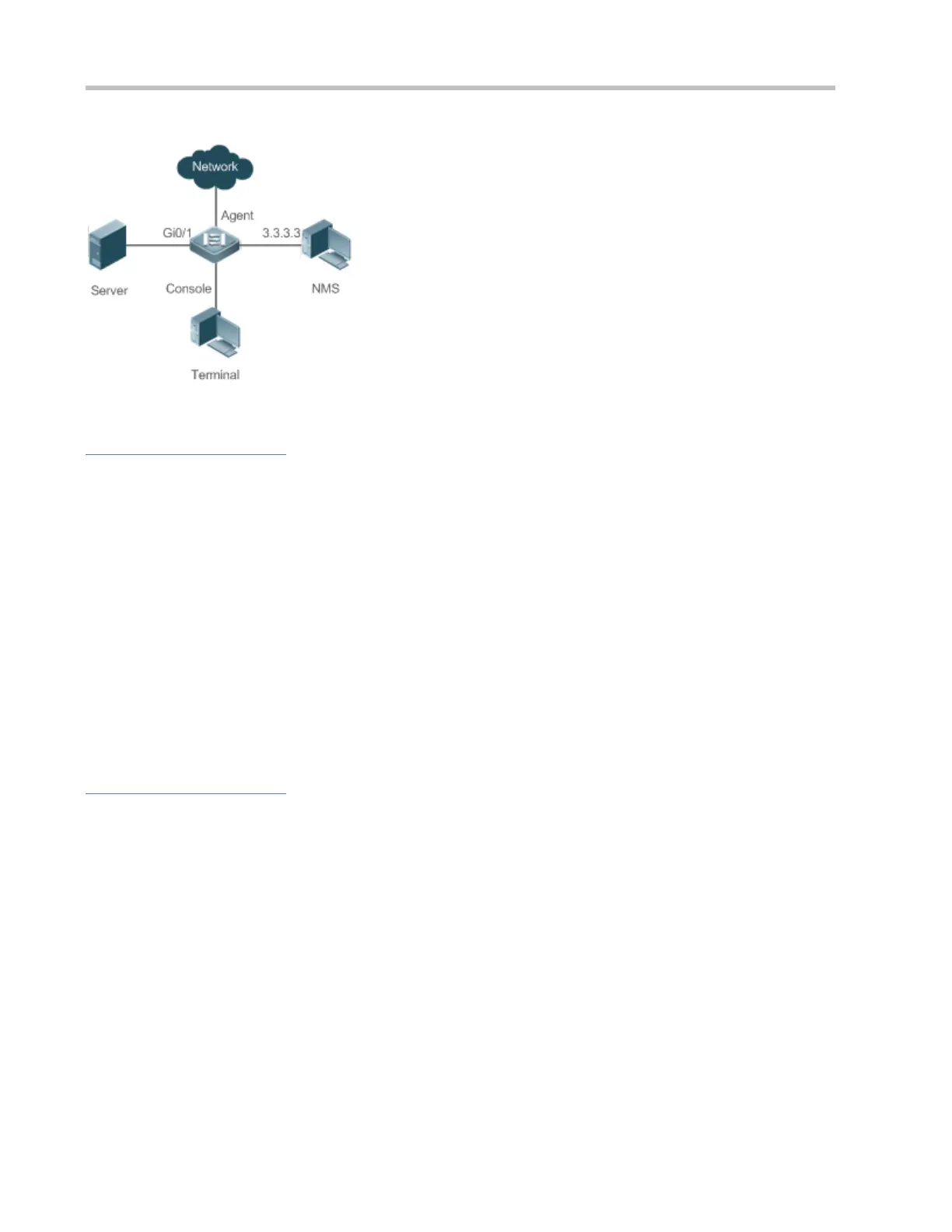Configuration Guide Configuring RMON
Figure 4-1
Deployment
Interface x is monitored to accumulatively collect statistics on the packet count of the interface and collect statistics on the
packet count and bandwidth utilization of the interface within the monitoring interval. If a packet count exception occurs on
the interface, an alarm is reported to the network management system (NMS). The configuration key points are as follows:
Configure the RMON Ethernet statistics function on interface x.
Configure the RMON history statistics function on interface x.
Configure the RMON alarm table and define RMON event processing actions in configuration mode. Monitored objects
of alarms are the object identifier (OID) values of specific fields in the RMON Ethernet statistical table configured for
interface x.
4.3 Features
Basic Concepts
RMON defines multiple RMON groups. Ruijie products support the statistics group, history group, alarm group, and event
group, which are described as follows:
Statistics Group
The statistics group is used to monitor and collect statistics on Ethernet interface traffic information, which is accumulated
from the entry creation time to the current time. The statistical items include discarded data packets, broadcast data packets,
cyclic redundancy check (CRC) errors, large and small blocks, and collisions. Statistical results are stored in the Ethernet
statistical table.
History Group
The history group is used to periodically collect network traffic information. It records accumulated values of network traffic
information and the bandwidth utilization within each interval, and saves them in the history control table. It includes two
small groups:

